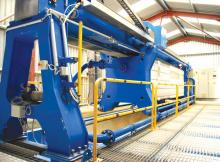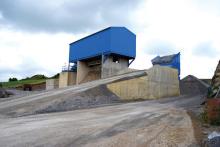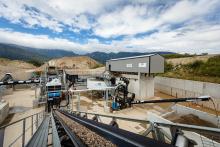Developed in cooperation with Advantage Chemicals, the process will save an estimated €60,000 per year on labour and energy costs, as well as disposal costs for waste water and sludge.
Before the new system was introduced in December 2011, the painting process produced approximately 260tonnes of waste/year. It used a classic sinking system, in which the paint would sink or form as sediment at the bottom of the pool of water beneath the paint facility.
Twice a year, the pool had to be cleaned, and the water and paint had to be removed, which was costly in terms of labour, energy, water and waste removal.
The new system has reduced the amount of waste by 88%/year.
HCME production engineering manager Robin Huijsman, who is also compliance officer for environmental regulation, explains: “Cleaning the pool beneath the paint facility twice a year was a difficult and dirty job. With the new system, we are able to remove the overspray paint from the water and reuse the water.
“Thanks to the new system, the facility is cleaner and the filtering system that removes paint particles from the air functions better.”
The new process combines real-time CoAg (coagulation) systems with waste water treatment systems. Instead of sinking or forming as sediment, the paint is suspended in the water and pumped to a waste treatment tank.
“For this tank, we asked Advantage Chemicals to develop a chemical that is able to remove the paint by making it float. The floating paint sludge is then skimmed off the top of the tank and is estimated at 30 tonnes per year,” said Huijsman.
“We are delighted with the results of the new process. The reduction in chemical waste is one of our key environmental objectives and has improved the overall carbon footprint of the HCME factory in Amsterdam. In addition to cost benefits, there are health benefits too, with less solvents being released into the factory air and less dust.”










